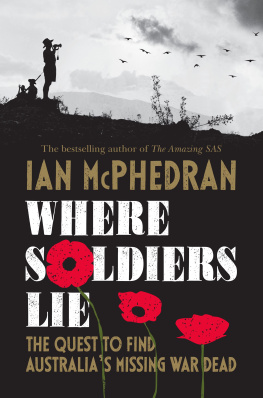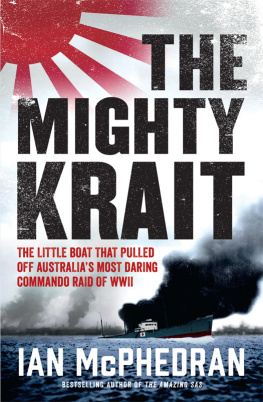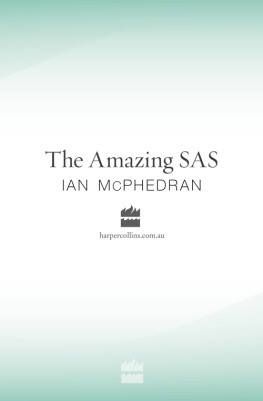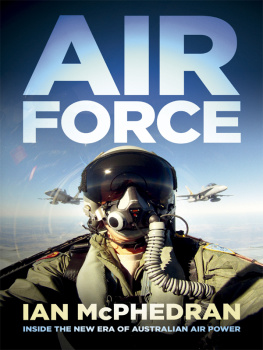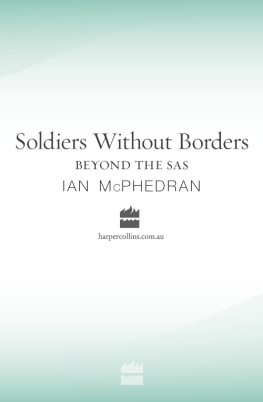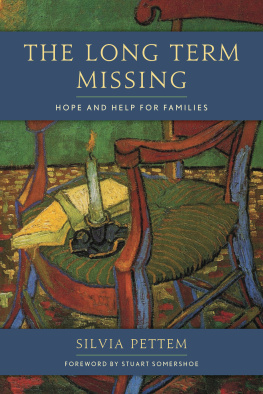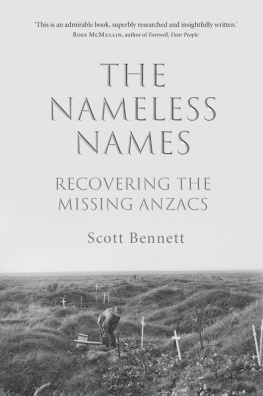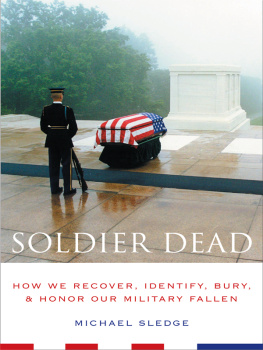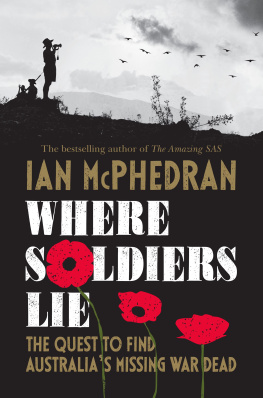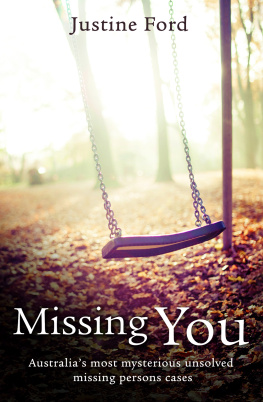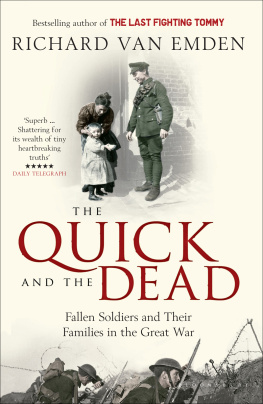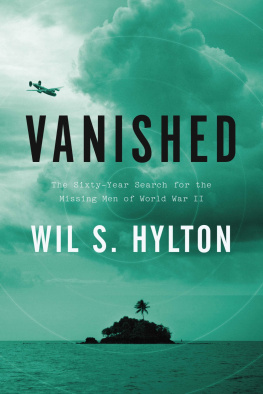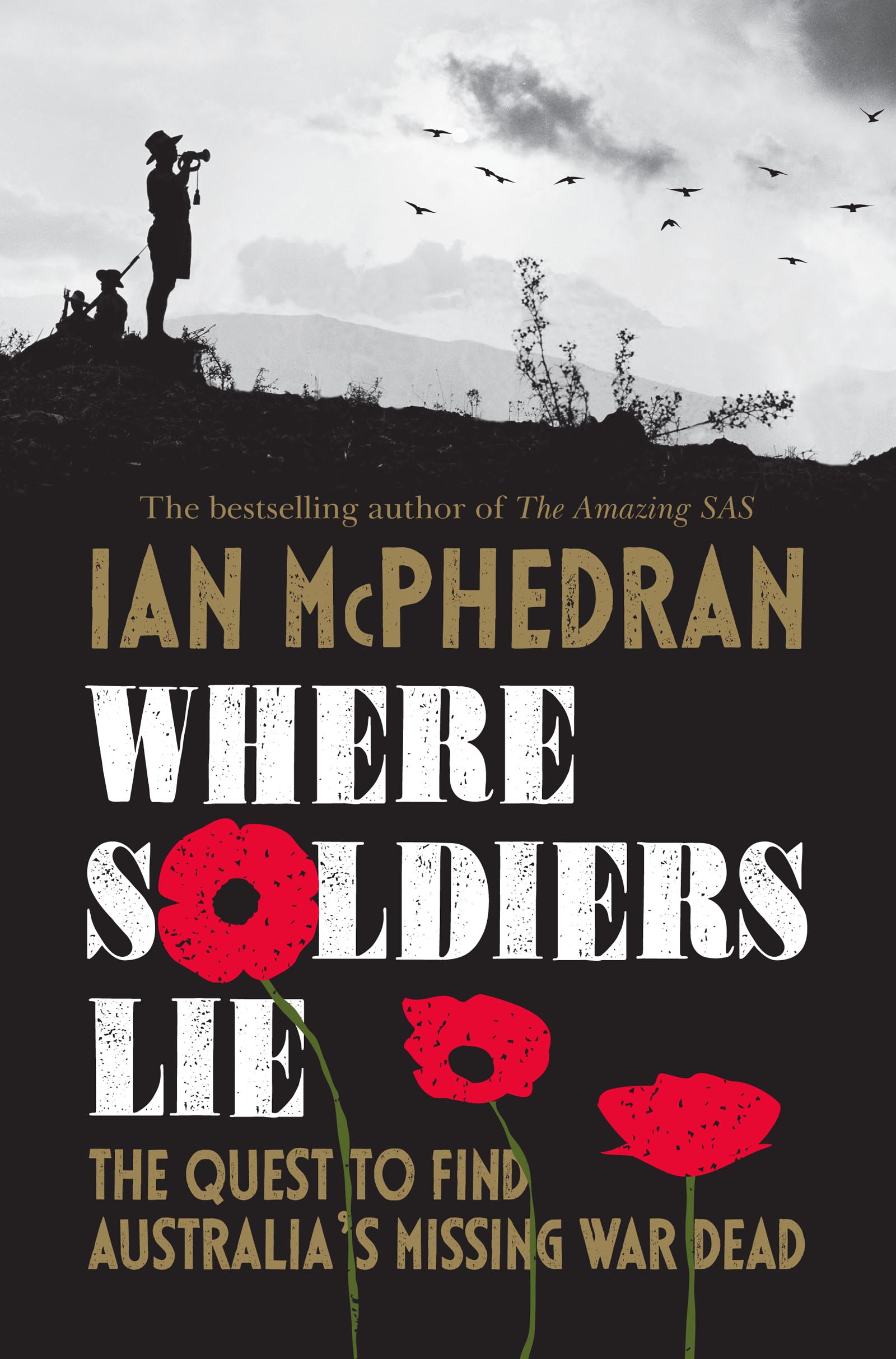CONTENTS
Guide
This book could not have been written without the support and consummate skills of my wife and principal editor, Verona Burgess, and the love and understanding of my family.
There are many people to thank and no doubt I will overlook some who should be mentioned by name. For that I apologise in advance.
Firstly, our expert transcriber Sharon Horwell has once again gone above and beyond to produce word-perfect transcripts of dozens of interviews in record time while juggling her own job and her young family. Thank you very much Shaz.
Former army investigator John (Jack) Thurgar carries an encyclopaedia of information about Australias war dead in his head, and he was kind enough to share some of his vast knowledge with me and to check my facts.
To the family of the late Dr Jim Bourke, particularly his son Anthony, I offer a special thanks for allowing me to use excerpts from Jims excellent doctoral thesis.
It was Jim who inspired me to write this book and his utter determination to find and recover the Vietnam six and to bulldoze through the many obstacles placed before him was a wonder to behold.
Jims offsider, Peter Aylett, was a mine of information and a terrific sounding-board. His love and respect for Jim is a great tribute to genuine mateship.
Historian and author Will Davies was generous with his time and expertise. He allowed me to join his 2018 World War I battlefield tour which provided tremendous insights into the Somme campaign and also helped me to find the grave of my great-great-uncle Lance Corporal Hugh McMahon.
Andrew Bernie from the office of Unrecovered War Casualties Army provided me with great support and was instrumental in my accompanying his team to Papua New Guinea.
The deputy director of Historic Unrecovered War Casualties Air Force, Wing Commander Greg Williams, was a mine of information about the RAAFs missing flyers.
The Chief of Army, Lieutenant General Rick Burr, was a strong supporter of the book project and is deeply committed to the work of UWCA.
US Marine Corps Captain Gene Harb from the Defense POW/MIA Accounting Agency (DPAA) and his expert team were also very supportive during the PNG mission.
The agencys deputy director Rear Admiral Jon Kreitz and central laboratory director Dr Bill Belcher opened their doors to me in Honolulu and gave generously of their time. My visit to the DPAA was kindly organised by USAF Lieutenant Colonel Kenneth Hoffman.
Melbourne-based retired art teacher Lambis Englezos, who almost single-handedly solved the mystery of the missing Australians at Fromelles, was a wonderful source of knowledge and contacts in the Friends of the 15th Brigade.
Mel Donnelly from the Commonwealth War Graves Commission in England opened the door to an incredible organisation that manages the beautiful final resting places for hundreds of thousands of the Commonwealths war dead.
Former head of the Office of Australian War Graves Ken Corke and senior Department of Veterans Affairs official Jack McKinnon were both extremely helpful.
My cousin Deb Powderley provided the excellent background research that encouraged me to track down and visit Hugh McMahons grave.
Special thanks to Bill Lowis and Graham Buchan who invited me to the Jim Bourke memorial dedication weekend in Ayr, north Queensland, in April 2018.
I am extremely grateful to all those people across Australia, the UK, France, Papua New Guinea and Hawaii who gave up their time to talk to me and to share their very personal and often extremely emotional stories with me. Special thanks goes to John Cuzens, Annie Cowdroy, Helen Kirton, Sara and David Ferguson, Brian Cleaver and Scott Heiman.
These books were of great assistance to me in the production of this work: The Searchers by Jim Eames (University of Queensland Press 1999), Soldier Dead by Michael Sledge (Columbia University Press 2005), SAS: Phantoms of War by David Horner (Allen and Unwin 2002), Vietnam: The Australian War by Paul Ham (HarperCollins 2007), Magpies in Vietnam by Doug Hurst (Barrallier Books 2012) and Anzacs on the Western Front by Peter Pedersen with Chris Roberts (John Wiley and Sons 2012).
Finally, a big thank you to Catherine Milne, Nicola Robinson, Katie Stackhouse and the dedicated and professional team at HarperCollins Australia for their support, patience and understanding.
Ian McPhedran
Sydney 2019
While travelling as a reporter to Vietnam in 2007 to cover the repatriation of Richard Tiny Parker and Peter Gillson I began to understand the profound impact that recovering the remains of dead soldiers has on their loved ones.
Standing on the tarmac at Hanois Noi Bai International Airport as the flag-draped coffins were loaded onto a RAAF Hercules aircraft, the tears shed by Robert Gillson for the father he had never met spoke to the deep feelings that transcend decades.
The need to honour wartime sacrifice echoed down the generations again in 2018 when I joined World War I battlefield guide and historian Will Davies for a tour of the Somme in northern France while researching this book and a feature piece for The Weekend Australian magazine.
The pride and emotion that the descendants of the fallen felt for men who were just names on a family tree, when walking the ground where they fell or visiting their graves, was palpable.
Like many of the Australians killed, wounded or captured between 25 April 1915 and 11 November 1918, my great-great-uncle, 20-year-old Hugh McMahon, came from a large, poor family for whom things that we take for granted today, such as running water, plentiful food, motor cars and holidays, were the stuff of dreams.
For thousands of young men like Hugh, a sleeper cutter from Araluen near Braidwood in NSW, going off to war was seen as a ticket out of poverty and the chance for adventure beyond the lonely Australian bush or the squalid suburbs that most called home. Dying in the freezing mud of the Somme was never part of the equation, but what 20-year-old male does not regard himself as ten-feet tall and bullet-proof?
Many people, including veterans and serving soldiers, argue that our unaccounted-for war dead should be allowed to rest in peace with their mates. Yet many thousands are not resting in peace in dignified graves. Instead, their remains lie mangled and mingled in mass burials, or alone and forgotten under an isolated stretch of a former battlefield.
It is only through the painstaking work of a small band of bone-hunters dedicated investigators and scientists that some of the secrets of Australias war missing can be unlocked and the mysteries solved.
*
Each year Will Davies brings a small supply of gum leaves from Australia and conducts a leaf-burning ceremony at one of the dozens of Commonwealth War Cemeteries across northern France. There, the smoke from the eucalyptus leaves carried lovingly across the world wafts around the headstones, bringing a touch of home to foreign fields.
So it was that on a fine, breezy spring day in the Somme Valley in May 2018 at the AIF Burial Ground Grass Lane near the village of Flers, I placed a sprig of gum leaves in the flower-bed beneath the headstone at plot 2, row L, grave number 16. The inscription read, Duty Nobly Done.
The scent of the Australian bush drifted across the grave of Lance Corporal Hugh James McMahon, who after 102 years had finally received his first visitor.
The Mighty Krait
The Smack Track
Afghanistan: Australias War
Too Bold to Die
Air Force
Next page
